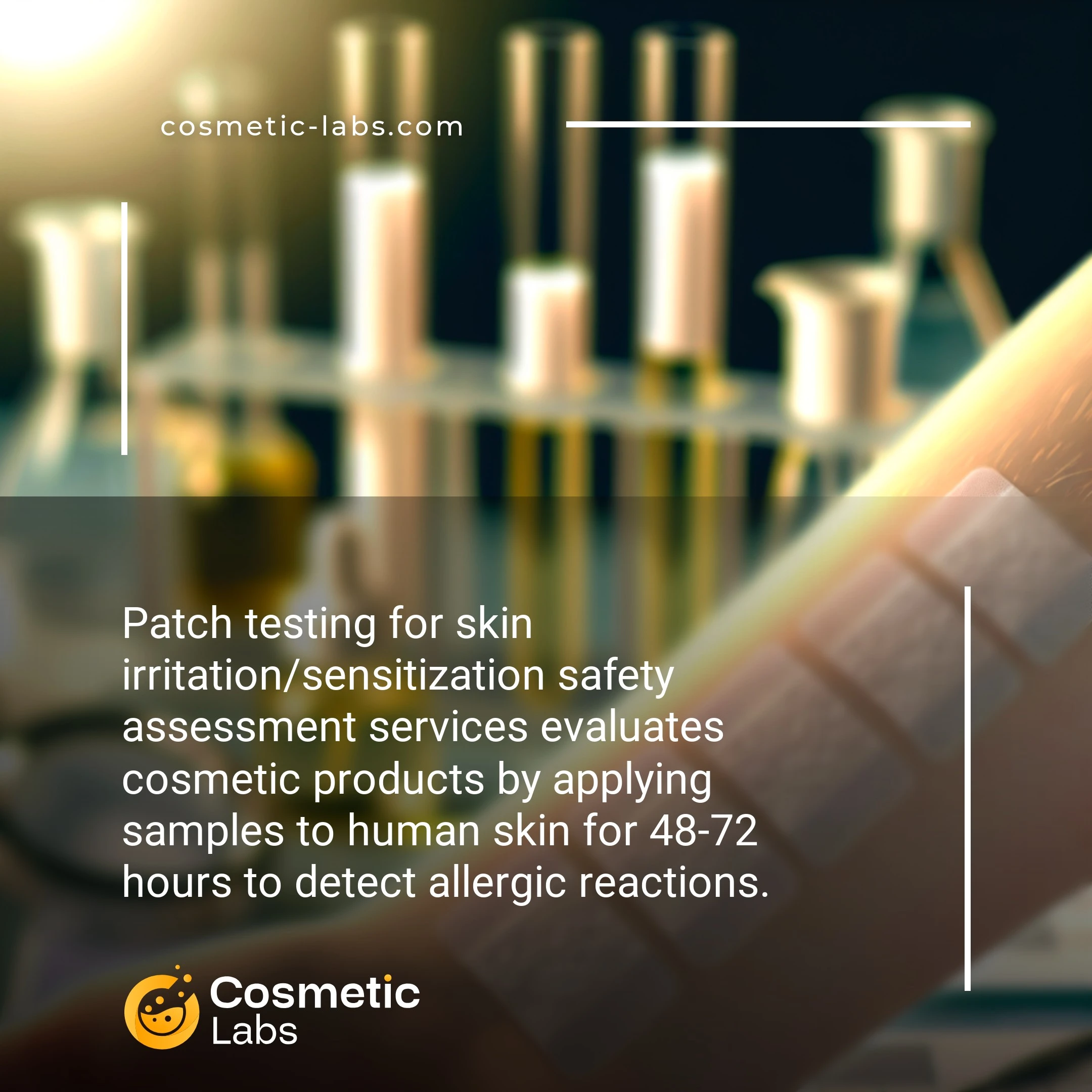Patch Testing Services for Cosmetic Safety Assessment

What is Patch testing?
Patch testing for skin irritation and sensitization safety assessment is a controlled laboratory method where cosmetic ingredients or finished products are applied to human volunteers’ skin under occlusive patches for 24-48 hours. Our partner labs monitor subjects for delayed allergic reactions and contact dermatitis over multiple visits, providing the safety data you need for regulatory compliance and consumer confidence before market launch.
Why do you need this service?
Cosmetic labs on our platform conduct patch testing protocols to validate new formulations before market launch, testing individual ingredients and finished products on human volunteers under controlled conditions. These studies generate the safety data you need for regulatory submissions and consumer confidence, with documented proof of skin compatibility that protects your brand from liability while meeting international safety standards for skincare, makeup, and personal care products.
Who provides Patch testing services?
All cosmetic labs providing Patch testing services
There is no company providing these services at the moment.
Patch Testing for Skin Irritation and Sensitization Safety Assessment
Patch testing serves as the gold standard for evaluating cosmetic product safety before market launch. This dermatological testing method identifies potential skin reactions through controlled exposure protocols that protect both brands and consumers from adverse reactions.
Contact Sensitization Testing Protocols
Labs conduct human repeat insult patch testing (HRIPT) to detect delayed allergic reactions over 6-week periods. Test subjects receive multiple applications of your product under occlusive patches to simulate real-world exposure conditions.
The testing process includes:
- Induction phase: 9 consecutive 48-hour applications
- Rest period: 2-week break to allow sensitization development
- Challenge phase: Single 48-hour application to detect reactions
- Follow-up evaluations at 24, 48, and 72 hours post-removal
Results provide statistical confidence levels that support regulatory submissions and marketing claims worldwide.
Irritation Assessment Methods
Primary irritation testing evaluates immediate skin reactions through single or repeated patch applications. Labs measure erythema and edema using standardized scoring systems that quantify reaction severity from 0-4 scales.
Testing options include:
- 24-hour single patch tests for acute irritation potential
- Cumulative irritation testing over 21 days
- Comparative studies against benchmark products
- Modified protocols for sensitive skin claims
Partner with experienced dermatology labs through our platform to access ISO-certified facilities that deliver reliable safety data for your product development timeline.
Practical Applications of Patch Testing for Skin Safety Assessment
Patch testing for skin irritation and sensitization assessment enables cosmetic brands to validate product safety before market launch and identify potential allergens during formulation development.
Pre-Market Safety Validation
Cosmetic labs conduct patch testing on finished products to establish safety profiles for regulatory submissions. Teams apply test formulations to volunteer skin patches for 48-72 hours, monitoring for erythema, edema, and other irritation markers. This process generates documented evidence of skin compatibility that satisfies FDA and EU regulatory requirements.
Brands use these results to support safety claims on product labels and marketing materials. The testing data also helps determine appropriate usage instructions and identify sensitive consumer groups who should avoid specific ingredients.
Ingredient Screening and Formulation Optimization
Labs perform patch testing on individual raw materials and ingredient combinations to identify potential sensitizers before full formulation. This approach allows formulators to eliminate problematic components early in development, reducing reformulation costs and timeline delays.
Testing protocols evaluate concentration thresholds where ingredients trigger reactions, helping brands optimize formulations for maximum efficacy while maintaining skin safety. Labs often test multiple concentration levels to establish safe usage ranges for different product categories.
| Testing Phase | Timeline | Sample Size | Key Outcomes |
|---|---|---|---|
| Ingredient Screening | 5-7 days | 20-30 volunteers | Sensitization potential identification |
| Formulation Testing | 10-14 days | 30-50 volunteers | Product safety validation |
| Comparative Studies | 14-21 days | 50-100 volunteers | Competitive benchmarking |
Ready to validate your product’s skin safety profile? Connect with experienced cosmetic labs on our platform to discuss patch testing protocols tailored to your specific formulation needs and regulatory requirements.
